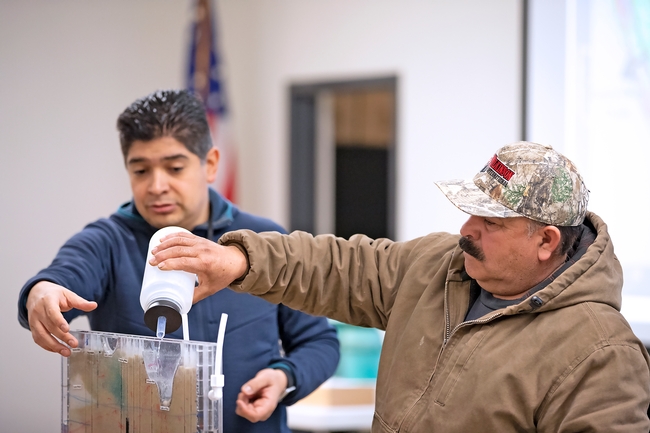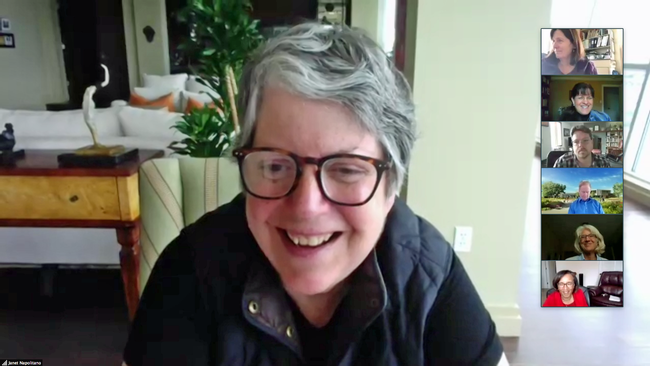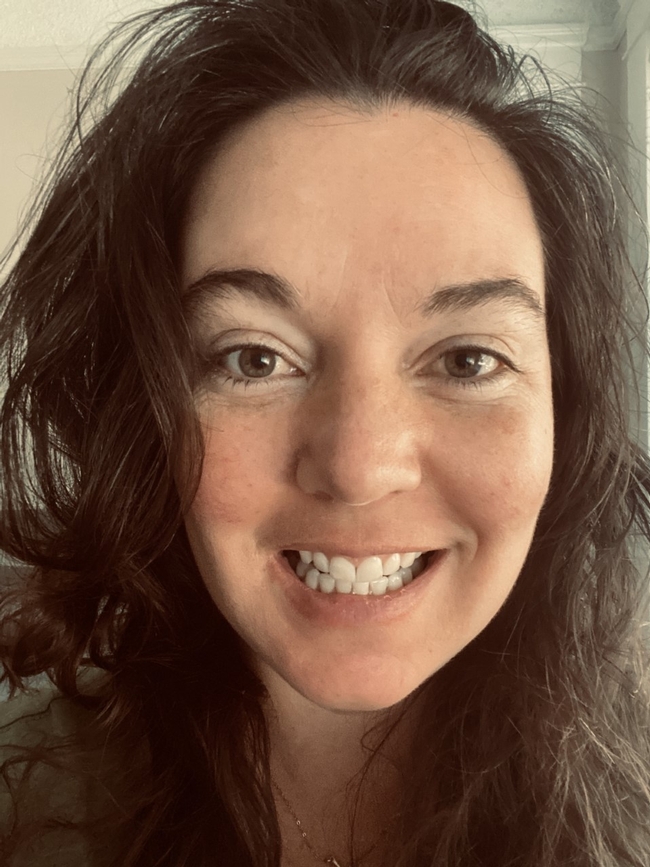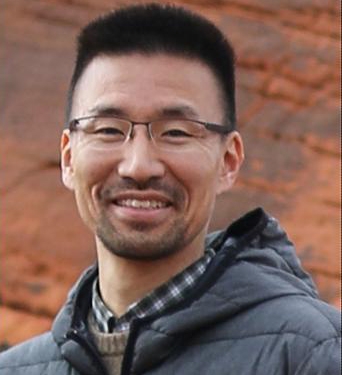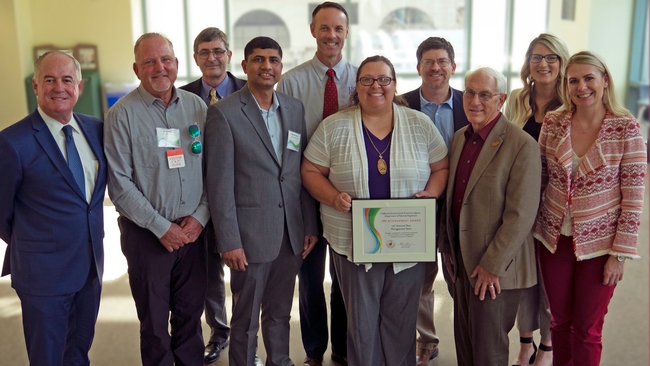Posts Tagged: Impact
Learning & Development: Impact Collaborative, copyright, eXtension resources, DEI, change management
ANR Learning & Development
Home | Webinar Recordings
Image by Arek Socha from Pixabay __________________________________________________________________________________________________
Do you have a learning topic you would like to present to our ANR colleagues that covers the ANR Strategic Plan 2020-25 or one of these four strategic learning goals? Submit your webinar idea here. __________________________________________________________________________________________________
Check below for upcoming opportunities, ICYMI (in case you missed it) recordings, and resources.
Extension Methods & Delivery
Building Support
Diversity, Equity & Inclusion
Office, Team and Personal Management
____________________________________________________________________________
EXTENSION METHODS & DELIVERY
_______________________________________________________________________________________________
Impact Collaborative Summit
Jan. 18, 19 & 20, 2022
9 a.m. – 2 p.m. Pacific Time
Click here to read more and register. Registration deadline: Jan. 5, 2022
The January 2022 Summit will focus on Community Resilience. Teams from Extension Foundation member institutions and special guests will:
- Learn the value of integrating community resilience into planning for collective action.
- Examine existing power structures, formal and informal social infrastructures through an equity lens.
- Increase their ability to position Cooperative Extension as an organization that can inform and facilitate the development of community-level policy systems and environmental change resulting in expanded community capacity and greater resilience
Using Extension Foundation Tools (eXtension Foundation)
- Connect Extension Basic Settings (video); Introduction to the platform; Presented by Aaron Weibe, Communications & Engagement Manager, Extension Foundation
- Extension Foundation Public Demo (video); Demo of an Extension Foundation publication and how to navigate it. With Ashley Griffin, Program Manager, Extension Foundation.
- National Registry Demo (video); A demo on how to use the National Registry of Cooperative Extension Programs and Assets. Utilize this tool to register projects, programs, or curriculum to the registry for nationwide collaboration among Cooperative Extension colleagues; Presented by Aaron Weibe.
- Mural Virtual Whiteboarding Tutorial (video 3:11). Learn how to get started with Mural, apply for a Mural account, discounted prices, and getting support for Mural; Molly Immendorf, Design Strategist, Extension Foundation.
Telling Your Extension Story (recording) (eXtension Foundation)
If you tell a strong story, people want to help you and support you. Telling Your Extension Story, writing like your life depends on it, is a presentation from USDA communications director, Faith Peppers at the 2021 Impact Collaborative.
Collaborative Design in Extension: Using a modified game jam to explore game-based learning (eXtension Foundation) (Link to publication)
Educational games can be an innovative way for Extension educators to teach content to any given audience. While many in Extension have an interest and passion for using and designing games, the process may seem intimidating to Extension professionals, especially those without experience in game design. This eFieldbook offers an alternative to full game design, in which game developers, content experts, and Extension educators collaborate to design a game prototype. This modified game jam process is budget-friendly and can be completed in a few weeks.
ePubs: Database available for all Cooperative Extension professionals (Connect Extension)
Click here to learn more.
This is a database available for all Cooperative Extension professionals that contains subject matter content or programming process model publications developed by the Extension Foundation and project/program fellows.
Examples of available ePublications:
Wellness in Tough Times Toolkit
The Google Earth Pro Pilot A Model for Creating Innovative Extension Curriculum
Emergency Preparedness, Response, and Recovery: Creating a Virtual Conference for Low-Resourced Communities
Video Resources Library (Connect Extension)
Click here to learn more.
This is a database available for all Cooperative Extension professionals from Extension Foundation Member Institutions that contains video resources on a variety of subjects including the Impact Collaborative Innovation Skill-Building blocks, Leadership resources, and technical tutorials. Examples of videos:
Keynote Speaker: Telling Your Extension Story with Faith Peppers
Keynote Speaker: Oh the Places You'll Go with Krystal Allen
Keynote Speaker: Overlooked People and Places, the Hope of a Nation with Nick Smoot
Delivering Online Courses (Connect Extension Resource)
Click here to learn more.
The Extension Foundation offers employees of its member institutions the free use of its online course system for the sale and delivery of courses to their clientele. This happens through a package of two integrated sites, Campus (a Moodle 3.11+ platform) and Catalog, a store front facilitating fee-based access to courses on Campus. Why use it?
- Anyone in the world can enroll
- Extension Foundation provides hosting and support
- Makes courses available 24/7/365
- Provides a single site for all Extension Foundation courses
- Allows for multi-institutional collaboration in development
- Provides incorporation of competency frameworks
- Uses a commercial storefront for sale of fee-based courses
Image by Gordon Johnson from Pixabay
Top of page
_________________________________________________________________________
BUILDING SUPPORT
_________________________________________________________________________
If it's free, can I use it?
Thursday, Jan. 20, 2022
Noon – 12:30 p.m.
Do you appreciate using external sources for images and videos to add to your presentations, online classes, workshops? Great! Many of us do. However, it is also important to use them according to their licensing and credit requirements. Otherwise, you may be infringing on copyright. Join Cynthia Kintigh and Robin Sanchez to learn best practices.
Click this Zoom link to join https://ucanr.zoom.us/j/751701428?pwd=Q1ZrbUtoQVJwMXJVRkQydUlwNytJQT09 Password: 4Learning | +1 669 900 6833 | Webinar ID: 751 701 428
SAVE THE DATE: Donor Stewardship
Wednesday, Feb. 9, 2022
Noon-1 p.m.
Our presenters will be Emily Delk, Kelly Scott and Mary Ciricillo.
Description and Zoom access coming soon!
Image by Clker-Free-Vector-Images from Pixabay
Top of page
__________________________________________________________________________
DIVERSITY, EQUITY & INCLUSION
__________________________________________________________________________
Save the Date! Growing as a Community (Office of Health Equity, Diversity and Inclusion, UC Davis)
Thursday, Jan. 20, 2022
Noon - 1:30 p.m.
Join us on Thursday, Jan. 20, from 12 - 1:30 p.m. PST for our 90-minute webinar, Growing as a Community: Racism as a Public Health Crisis. We will be featuring a special short screening of Cooked: Survival by Zip Code followed by a discussion and audience Q&A with special guests who are part of a national movement to address the colliding crises of structural racism, health inequity, and climate change. For more information about the film, please go to www.cookedthefilm.com.
Registration information will be ready in early January.
Perspectives: Culturally responsive place-based education series
Feb. 3, March 3, April 7, May 5 (first event took place Dec. 2, 2021)
3:30 – 5:30 p.m. Pacific Time
Click here to learn more and to register.
The Michigan State University Extension Tollgate Farm and Education Center is hosting a virtual professional development panel discussion series for formal and non-formal educators about learning to better incorporate the perspectives of those with whom we work in schools and educational programs. Moderators and panelists from each community provide a chance for educators to deepen their teaching practice in a safe online space for open conversation and community. SCHECHs are available for teachers.
Perspectives: Culturally Responsive Place-Based Education began Nov. 4, 2021, with a session on indigenous perspectives & experiences of maple sugaring especially as they connect to schools and place-based education centers.
Dec. 2 - Incorporating Black Perspectives in Place-Based Teaching and Learning
Feb. 3 - Special Needs Perspectives and PBE In and Beyond the Classroom
March 3 - Engaging with LGTBQ+IA Communities in PBE in Formal and Non-Formal Settings
April 7 - A Latinx Lens: Incorporating Latinx Perspectives through Place-Based Educational Programming
May 5 -Incorporating Asian Principles, Practices, People in Community, & Place-Based Learning
Image by Clker-Free-Vector-Images from Pixabay
Top of page
________________________________________________________________________________________________
OFFICE, TEAM & PERSONAL MANAGEMENT
________________________________________________________________________________________________
Change Management for Managers and Supervisors (Virtual-UC Davis)
Jan. 12, 2022
12:30-4:30 p.m.
Click here for more information/registration.
Managers are critical to change success, however, they sometimes underestimate their role or are unsure how to fulfill it. Change Management for Managers and Supervisors provides people managers with the tools and skills necessary to understand and process change themselves while proactively leading their teams through change. In this program, participants will:
- Gain an appreciation for the impact of change management on organizational results.
- Understand foundational aspects of change management and the critical role managers play in the change process.
- Learn a practical framework for planning for the many organizational changes that impact them and their teams.
- Understand how to plan for and manage resistance to change.
Need a facilitator for your next meeting?
Do you need a facilitator for an upcoming meeting? Internal employee meeting? Meeting with clientele? Please check out this webpage to find someone. What a facilitator does:
- Helps a group free itself from internal obstacles so they may more effectively accomplish goals
- Guides the group helping them identify ways to respond to challenges, while maintaining safety and trust among the members
- Brings processes to help the team achieve its mission
Also, if you are trained in facilitation, experienced and interested in serving as a facilitator for other ANR units or even our ANR partners, please fill out this survey to be added to the ANR Facilitator webpage.
Leadership - It's all about everyone
By Scott Reed, Vice Provost Emeritus, Outreach and Engagement, Oregon State University
Click here to read more.
Essayist William Gibson recently reminded us, “The future is here. It's just not widely distributed yet.” The same sentiment is reflected by the Institute for the Future in discussions of leadership in a world characterized by explosive connectivity and disruption and describes literacies for leading in a “VUCA” world: Volatile/Uncertain/Complex/Ambiguous. The Institute further observes that in the next ten years, leadership will be more distributed and that rock star leaders will be rarer.
How To Build a Fearless Organization (Harvard Business School – Working Knowledge)
By Novartis Professor of Leadership and Management
“Psychological safety at work takes effort. It's not the norm. But it's worth the effort,” says Professor Amy Edmondson. She explains how and why a culture of open candor — and the willingness and courage to speak up — is a strategic asset and can be developed in companies of all sizes, in her new book The Fearless Organization: Creating Psychological Safety in the Workplace for Learning, Innovation, and Growth.
“These are not things that happen routinely in most organizations, but they are mission critical to doing well in a complex, fast changing world,” she says. In our Q&A, we asked her guidance for managers and leaders. Click here to read more.
Managing Your Well-Being as a Leader (LinkedIn Learning)
Course link
Research shows that today's leaders are suffering from poor well-being and mental health issues more so than ever before. Too often, they put the needs of the business or their team before their own needs. But, much like airline pre-flight instructions to “put your oxygen mask on first, before helping others,” leaders need to take a similar approach by managing their own well-being first. By doing so, they can become role models for their employees and build stronger team relationships that lead to better health and productivity outcomes. In this course, New York Times bestselling author, researcher and workplace expert Dan Schawbel gives leaders the inspiration, advice, and real-world examples to guide them on their journey to better well-being.
Request your LinkedIn Learning account by contacting ANR's IT Team at help@ucanr.edu.
Developing Your Data Analysis Skills (LinkedIn Learning)
(Course learning path link)
Explore the practice of data analysis. Learn about the process of applying statistical and graphical techniques to data in order to discover useful information. Identify underlying principles, reasons, or facts by breaking down information or data into separate parts.
Request your LinkedIn Learning account by contacting ANR's IT Team @ help@ucanr.edu.
Top of page
________________________________________________________________________________________________
Everyone can learn something new.
ANR Learning & Development
Find webinar announcements and recordings here.
learninganddevelopment@ucanr.edu
UC’s economic impact on California hits $82B annually
The University of California is an essential economic engine for the state, contributing roughly $82 billion annually to California's economic output. Over a half-million jobs in California — or one in every 45 — are supported by the University, and UC-related spending generates nearly $12 billion annually in federal, state and local tax revenues. These are just some of the highlights from a new detailed economic impact report released today.
The study by Beacon Economics revealed that every dollar invested in UC by the state of California generates over $21 in economic output, including nearly $10 in labor income. The University's total economic impact on labor income in the state is over $37 billion annually. These figures reflect University spending as well as its direct and indirect economic impacts.
“UC's economic ripple effect is so large that it touches every region in the state, including those without a campus or medical center,” said UC President Michael V. Drake, M.D. “Beyond economic impact, the University's contributions in health, innovation and social equity are even more important to the lives of Californians.”
The report, “The University of California Economic, Fiscal and Social Impact Analysis,” for the first time includes an analysis of UC's social impact on the state as well as its economic and fiscal contributions.
“The report underscores UC's remarkable power to fuel California's leadership in numerous economic sectors while stimulating equity and opportunity across social and ethnic groups,” said John A. Pérez, chair of the UC Board of Regents. “The University's impact is truly transformative and far-reaching.”
Research and innovation
The economic impact study reaffirmed that UC is a world leader in innovation, averaging five inventions every day. In fiscal year 2019 UC received over 500 patents, bringing the University's total to over 5,000 active U.S. patents and nearly 6,000 foreign patents. This reputation for excellence attracted nearly $6 billion in federal, state and private research awards to the University in fiscal year 2019 alone.
“UC researchers are tackling some of the state's most urgent problems with ingenuity and innovation, bringing to bear solutions in various fields from hydrology to artificial intelligence and energy sustainability to entertainment,” said Theresa Maldonado, Ph.D., UC's vice president of Research and Innovation.
Groundbreaking work conducted at UC institutions has been recognized around the world, recently in November 2020, when three UC faculty and one UC alumnus won Nobel Prizes. There are now 68 UC-affiliated Noble laureates.
Health care
University of California Health (UCH) is an integral part of the state's health care delivery system, a driver of medical breakthroughs, the leading source of California health care professionals and an economic engine in its own right.
“The academic health centers and health professional schools of UCH are a pillar of California's health care system,” said Dr. Carrie L. Byington, executive vice president of University of California Health. “The pandemic has underscored the vital role that UCH plays in the health and well-being of all Californians, in addition to its substantial economic impact.”
At the onset of the pandemic, UCH hospitals quickly began in-house testing for SARS-CoV-2, implemented surge plans that increased capacity by nearly 40 percent and initiated hundreds of research projects and clinical trials focused on COVID-19. By the end of 2020, UCH had performed more than 400,000 tests for its patients and hundreds of thousands more for public health agencies, nursing homes, first responders and other hospitals. UCH participation in clinical trials led to emergency use authorization of two vaccines.
UCH also operates the nation's largest health sciences instructional program. Nearly 15,000 students and trainees attend UC's 20 professional schools and more than 70 percent of graduates remain in California.
In 2018-19, UCH hospitals contributed approximately $1.7 billion in unreimbursed expenses to serve Medicare, Medi-Cal and uninsured patients, demonstrating our commitment to serving the most vulnerable populations. Additionally, UCH provided nearly a billion dollars in community benefits in the form of free health services and health professions education. As a major employer, UCH hospitals spend $5.4 billion annually on salaries and wages.
Social equity
A UC education contributes to closing the economic opportunity gap, according to the study. Roughly 40 percent of undergraduates are the first in their family to attend college, and 37 percent are from low-income families. Remarkably, within six years of graduation, most first-generation UC graduates earn more than their parents, and most low-income graduates earn more than their parents in just five years.
The study also put a dollar value on what a UC education means to individual Californians. University graduates earn $9,000 more annually compared to non-UC college graduates, and $45,000 more annually compared with Californians who do not have a college degree.
High student debt is a pronounced economic problem often hitting those who can least afford it. However, nearly half of California residents who enter UC as freshmen graduate without any student debt. Almost 60 percent of California residents enrolled at the University have all their tuition and fees covered by financial aid, according to the study.
Rural impact
Since its founding in 1868 as a land grant university, UC has contributed to the health and success of California's rural regions. Through its Agriculture and Natural Resources (ANR) Division, which has offices in every county, the University provides research and education in agriculture, natural resources and nutrition. ANR also provides leadership and growth opportunities for the state's youth through programs like 4-H.
In fiscal year 2019, ANR generated 24 ideas that led to patents and offered more than 40,000 educational events across California on topics such as drought, climate change and invasive species. To date, ANR has certified over 5,900 UC Master Gardeners. These volunteers assist home gardeners and community organizations with up-to-date information and helping hands. In 2019, they volunteered nearly half a million hours, valued at roughly $15 million.
ANR partners with state and federal agriculture and social services agencies to manage two statewide nutrition education programs: California Expanded Food Nutrition Program in 24 counties and CalFresh Healthy Living Program in 31 counties. In 2019, these programs shared valuable information about healthy lifestyle choices with tens of thousands of Californians of all ages.
PAC meets virtually, thanks President Napolitano for her service
The President's Advisory Commission on Agriculture and Natural Resources met via Zoom April 9 as everyone was sheltering in place during the coronavirus pandemic. Jean-Mari Peltier, PAC chair, welcomed the PAC members for their last meeting with President Janet Napolitano. Last September, Napolitano announced that she will step down as UC's leader Aug. 1.
President Napolitano commended ANR for its flexibility in response to the COVID-19 crisis. ANR is “the University of California for large parts of the state and we're proud that you are,” she told VP Glenda Humiston, adding that ANR is performing well under her leadership.
Napolitano thanked the PAC members for contributing their time and advice during her seven years at the UC helm, calling ANR “essential to UC identity as land grant university.” The commissioners thanked the president for her support for ANR. In response to questions about building support for ANR with her successor, Napolitano recommended taking the new president out of Oakland for site visits to learn about ANR. She described her visits to Kearney Agricultural Research and Extension Center, Humboldt County and other ANR sites as “eye opening.”
In her update about ANR, Humiston reported that despite the coronavirus pandemic's disruption to public gatherings, all ANR programs are still serving communities. “I'm really impressed with the innovative ways they are finding to deliver outreach,” she said, adding that advisors are adapting, for example, doing ranch visits via phone. Humiston also described the UC ANR Governing Council's tour of the South Coast Research and Extension Center in February to see how ANR engages urban Californians. She noted that a regents tour of South Coast REC planned for April 23 has been postponed until after the pandemic passes.
Karen Ross, secretary of California Department of Food and Agriculture, joined the group to discuss how CDFA is responding to food system disruption resulting from the COVID-19 crisis. “I am optimistic about agriculture; we are so innovative and resilient,” Ross said, adding that she is concerned about funding for UC ANR and UCCE. She recommended seizing the moment while consumers are thinking about the food system to educate people about UC ANR's role.
Building on their December meeting, the PAC members continued their discussion of the future of the commission. They discussed recommendations to ensure the success and sustainability of ANR as well as the PAC.
They recommended the role of PAC members include
- Communication & advocacy
- Engaging as a strategic tool for problem solving
- Being a connector to industry leaders
- Supporting fund development
- Advising on strategy and mission priorities
To make their membership meaningful, the commissioners said they would like
- Greater active involvement
- Knowing they add value
- Feeling connected with ANR and other PAC members
- Sharing critical information
Although the PAC usually meets twice a year – in the spring and fall – the PAC agreed to meet again via videoconference in May or June to discuss and approve the new PAC charter.
Names in the News
Soule named assistant vice provost for CE
Katherine Soule will serve as ANR's new Assistant Vice Provost for Cooperative Extension. She will start her new duties on July 1, 2020, and continue to serve as UCCE director for San Luis Obispo and Santa Barbara counties and as UCCE youth, families and communities advisor. The role was previously held by Lynn Schmitt-McQuitty until she assumed the role of Statewide 4-H Youth Development Program director.
“We are excited to have Katherine on the Cooperative Extension administrative team! She brings a breadth of Cooperative Extension experiences and leadership skills,” said Mark Lagrimini, vice provost for research and extension. “Katherine is known for her innovative, collaborative, and strengths-based leadership. She cares deeply about improving lives and working environments for her unit, her community and ANR.”
Soule earned her Ph.D. from the University of Georgia, Athens in 2013 and became the UCCE youth, families and communities advisor for San Luis Obispo and Santa Barbara counties. In 2017, she accepted an additional appointment as UCCE director for these counties. She was elected as UC ANR's Academic Assembly Council president for a two-year term ending in June 2020.
"As the assistant vice provost of Cooperative Extension, I look forward to supporting the development and successes of new and existing county directors,” Soule said. “I hope to promote collaborative, cross-county communication, while focusing on identifying and meeting the needs of county directors across the division. We are all most effective when we learn from and support one another, so I look forward to connecting with academics, county directors, ANR leadership and other UC ANR personnel in this new role."
Choe, Dara and IPM team honored by Pacific Branch of ESA
UC ANR scientists Dong-Hwan Choe, Surendra Dara, David Haviland and Jhalendra Rijal received awards for their exemplary work from the Pacific Branch of the Entomological Society of America. The PBESA presented its annual awards on April 20, at a virtual ceremony due to the coronavirus pandemic.
Choe, UCCE specialist in the UC Riverside Department of Entomology, won the Medical, Urban, and Veterinary Entomology Award.
“Since joining the faculty at UC Riverside in 2011, [Choe] has developed an outstanding research and extension program dealing with the major urban structural pests and related issues in the western United States,” wrote Mike Rust, UC Riverside entomology professor, in his nomination letter.
His research includes exploiting the role of semiochemicals and behavior to control social insects and developing novel ant baits.
“Dr. Choe has been at the forefront of developing hydrogels as carriers of baits to control ants and yellowjackets. Developing cost-effective and environmentally safe delivery strategies has always been a major problem facing the use of ant baits in agriculture and urban setting. His pioneering biodegradable alginate beads promise to be a major advancement,” Rust wrote.
Choe also participates in workshops for agricultural pest control advisers, UC Master Gardeners and urban pest control operators.
Dara, UC Cooperative Extension entomology and biologicals advisor for San Luis Obispo and Ventura counties, won the Award for Excellence in Integrated Pest Management.
This annual award recognizes individuals who made outstanding contributions in research and outreach in the area of IPM. Dara's new IPM model has been well-received and its impact has been documented in a UC Delivers story. Dara is the first UC ANR scientist to receive this award and fourth from UC since the Pacific Branch began offering awards in this category in 2009.
The UC IPM Almond Pest Management Alliance Team won the Entomology Team Work Award. The team consists of UC IPM advisors David Haviland and Jhalendra Rijal, former UCCE advisor Emily Symmes, UCCE Kern County staff research associate Stephanie Rill, industry researcher Bradly Higbee of Trécé, USDA scientist Charles Burkes and Bob Curtis of the Almond Board of California.
The team encouraged the adoption of mating disruption for managing navel orangeworm, a major pest in almond orchards, especially in the San Joaquin Valley. After they began demonstrating that mating disruption proved to be an economical pest control method in orchards, they saw a rapid rise in growers adopting the technology. Based on a survey of pest control advisers and growers conducted in the early 2019, the anticipated use of navel orangeworm mating disruption for the 2019 season in San Joaquin Valley was 32%, as opposed to the 7% adoption in 2017. Kern County data showed a 26% countywide increase in the adoption of mating disruption from 2017-2018.
For more than a decade, the team conducted research on navel orangeworm, spider mites, leaffooted bug and ants that laid the groundwork for IPM adoption. For the past three years, the team put these IPM practices on display using nine demonstration orchards across the San Joaquin Valley as part of CDPR Pest Management Alliance and Almond Board of California grants.
The UC IPM Almond Pest Management Alliance Team received an award in February from the California Department of Pesticide Regulation and California Environmental Protection Agency
Three UC Davis faculty members were also selected for prestigious awards: Lynn Kimsey, Walter Leal and Robert Kimsey.
The Pacific Branch covers provinces/states in Canada, U.S. and Mexico on the Pacific Coast.
Farm and Ranch Stress Assistance Network applications due June 23
USDA NIFA requests applications to the 2020 Farm and Ranch Stress Assistance Network funding opportunity.
The purpose of the Farm and Ranch Stress Assistance Network (FRSAN) Program is to establish a network that connects individuals who are engaged in farming, ranching and other agriculture-related occupations to stress assistance programs. The establishment of a network that assists farmers and ranchers in time of stress can offer a conduit to improving behavioral health awareness, literacy and outcomes for agricultural producers, workers and their families.
The FRSAN program will accept applications for Regional Networks. In FY20, NIFA is seeking applications from regional partnerships and collaborations that are led by or include nongovernmental organizations (NGO), state departments of agriculture (SDA), Cooperative Extension Services (CES), and Indian tribes with expertise in providing professional agricultural behavioral health awareness, counseling as appropriate, education, training and referral for other forms of assistance as necessary. NIFA is soliciting applications that align with, build upon, and/or complement the projects funded in FY19. In 2019, the FRSAN program launched with four awards corresponding to U.S. regions in the Northeast, North Central, South and West. In 2020, funding has increased fivefold to support regional frameworks offering stress assistance programs, training, services, and referral.
The long-term goal of the FRSAN projects is to establish a Farm and Ranch Stress Assistance Network that provides stress assistance programs to individuals who are engaged in farming, ranching, and other agriculture-related occupations on a regional basis. Network members must initiate, expand or sustain programs that provide professional agricultural behavioral health counseling and referral for other forms of assistance as necessary through the following:
- Farm telephone helplines and websites
- Training, including training programs and workshops, for the following:
- Advocates for individuals who are engaged in farming, ranching, and other occupations relating to agriculture
- Other individuals and entities that may assist individuals who-
- are engaged in farming, ranching, and other occupations relating to agriculture
- are in crisis
- Support groups
- Outreach services and activities, including the dissemination of information and materials
Applicant organizations must have demonstrable prior experience working in the agricultural stress assistance space. For purposes of implementing FRSAN, a network is an organizational arrangement among three or more separately operated domestic public or private entities, including the applicant organization, with established working histories in the targeted region. Regional lead entities must have the capacity to make state-level sub-awards, to include monitoring the performance of specific projects and active participation within the larger regional network. Providing training and/or offering direct services in every state/territory in the targeted region is not required in FY 2020. However, the applicant must clearly articulate where and why training and services are being offered, as well as any rationale for areas not served and how all states (and territories, as appropriate), will be added to the network in FYs 2021 and 2022, if the project intends to seek continuation funding in those years. If possible, a national, regionwide or subregional helpline and/or website that is available to all states should be implemented and publicized beginning in FY 2021.
Funds may be used to map resources in each region, provide a framework for how those resources can be/are connected, and train state-level people working with agricultural producers (train-the-trainer model) about how to identify farmers under stress, about the existence of a given regional network, availability of specific resources and how to access them, as well as how to make referrals to programs that are equipped to provide direct behavioral care assistance. Such maps must link with USDA programs such as Agriculture Mediation Program and Crop Insurance Mediation and state and county-level USDA field offices with which producers may engage if and when appropriate.
It is NIFA's intention to fund four grants to four separate FRSAN regional leads as a result of this FY 2020 competition: one each in the Northeast Region, North Central Region, Southern Region, and the Western Region. The maximum award for a standard grant is $7,187,000 for a three-year project.
For more information about the FRSAN program and to apply, please visit: https://nifa.usda.gov/funding-opportunity/farm-and-ranch-stress-assistance-network?utm_content=&utm_medium=email&utm_name=&utm_source=govdelivery&utm_term=
To request a copy of the 2019 FRSAN webinar slide deck, please email webchanges@usda.gov.
Applications are due Tuesday, June 23, 2020.






